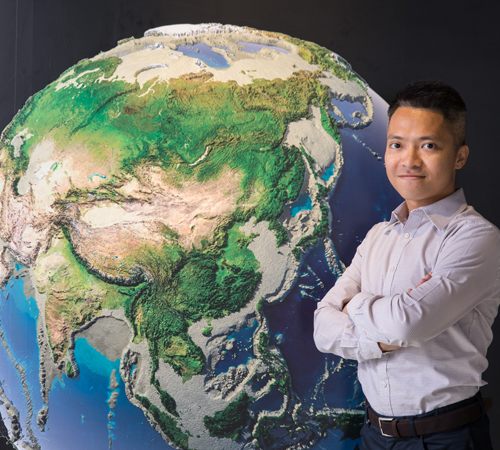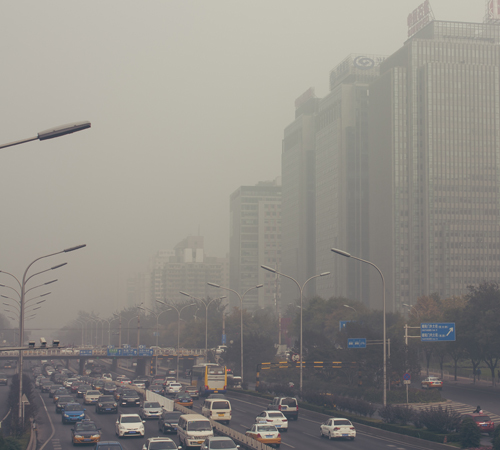Sustainable Agriculture – a Key Element to Combating Climate Change
In July 2019, the UN’s Food and Agriculture Organization (FAO) issued the report ‘The State of Food Security and Nutrition in the World 2019’.(1) According to this report, the world’s hungry population has risen for three consecutive years. Over 800 million people do not have enough food, which means one out of every nine people live a hand-to-mouth existence.
‘The continual increase of world’s hungry population involves factors such as political turmoil, environmental changes and natural hazards. Coupled with climate change, extreme weather events occur more frequently. Food supply and food prices are fluctuating. This in turn intensifies the social issues, resulting in a vicious circle’ said Prof. Tai Pui-kuen Amos, Associate Professor of the Earth System Science Programme at CUHK.

Based on the growth rate of the world’s population and the preference for meat-based diets in affluent societies, FAO expected global human demand for food would be 60% higher in 2050 than it was in 2005.(2) Commenting on whether increasing farmland and boosting crop yields could substantially alleviate the food crisis, Prof. Tai explained: ‘Modernized agricultural production relies heavily on fossil fuel combustion for using machinery, producing fertilizers and transporting crops. A study has shown that food production activities account for around 30% of the world’s greenhouse gases.(3) Overuse of fertilizers and pesticides also create a huge amount of pollutants, adversely affecting the environment, ecosystems and human health.’
Modern agriculture is characterised by monoculture (the large-scale cultivation of a single crop) and extensive use of fertilizers and pesticides. Monoculture requires the use of heavy machinery for ploughing and irrigation. This consumes a lot of energy and has a high carbon footprint. From an ecological perspective, monoculture is unsustainable. It spreads crop diseases and pests, depletes soil nutrients, and requires high dosages of pesticides and chemical fertilizers to maintain crop yields. These chemicals disperse into the water, soil and atmosphere, polluting the environment and threatening human health.
To deal with the challenges of climate change and food crisis, the current food production model must be altered so as to achieve a sustainable balance between food production and environmental ecology.
‘There are numerous sustainable farming methods, each with its own characteristics. Our research stresses the reduction of nitrogen emissions from farmland’ explained Prof. Tai. ‘If China replaces its monoculture with intercropping, such as growing maize or wheat alternately with soybeans, the nitrogen fixing ability of soybeans can produce nutrients to nourish other crops. This will lower fertilizer usage, avoid water and soil pollution, and reduce the amount of particulate matter (PM) in the atmosphere by about 10%. Adopting sustainable farming methods can reduce air pollution.’

Prof. Tai's team utilized a pioneering computer modelling system to study how sustainable farming methods could improve the world’s food supply and slow climate change. ‘In the past, scientists in different disciplines could only understand the characteristics of a particular field through data obtained in laboratories or field experiments, but were unable to quantify and connect other factors. Our “Earth System Modelling” approach can incorporate environmental, social and economic activities, together with the effects of climate change, into mathematical models. The interaction between these various factors in different circumstances can be modelled, enabling us to make a more comprehensive analysis and recommend more robust solutions.’
Prof. Tai and his team intend to conduct a study in the arid regions of north-western China and Central Asia. They will test various water saving irrigation techniques (drip irrigation and membrane irrigation) in order to develop sustainable farming methods, that will simultaneously increase food production, reduce environment pollution and mitigate climate change.(4)(5) Prof. Tai also noted that, as consumers, we can all play our part in building a more sustainable world. For a start, we should eat less meat and purchase local agriculture products whenever we can. By changing our own lifestyles, we can help to create a more environmentally-aware society. Not only that, but we will also live healthier lives.
Notes
| 1. | Source: FAO, IFAD, UNICEF, WFP and WHO. (2019). The State of Food Security and Nutrition in the World 2019. Safeguarding against economic slowdowns and downturns. Rome, FAO. |
| 2. | Source: Alexandratos, N. and Bruinsma, J. (2012).World agriculture towards 2030/2050: the 2012 revision.ESA Working paper No. 12-03. Rome, FAO. |
| 3. | Source: Vermeulen S. J., Campbell B. M., Ingram J. S.I. (2012). Climate Change and Food Systems, Annual Review of Environment and Resources, 37:195–222 |
| 4. | Drip irrigation reduces water wastage by using drippers for irrigation, which allow water to drip slowly and gently into the soil around the roots of plants. |
| 5. | Membrane irrigation reduces water wastage by using a thin, porous plastic membrane to cover the crops to be irrigated. Water seeps gently through the pores, irrigating the soil around the roots of the plants. |
The United Nations Sustainable Development Goals (SDGs) related to this article include:
End hunger, achieve food security and improved nutrition, and promote sustainable agriculture.
Goal 3: Good Health and Well-being
Ensure healthy lives and promote well-being for all at all ages
Goal 6: Clean Water and Sanitation














